Spreading Dogbane
Apocynum androsaemifolium
This lovely native plant is widespread and found in nearly all of North America.
When it grows in the open, it produces small but abundant bell-shaped white flowers striped pink on the inside.
But even when it finds itself shaded and gets by without flowers, it still is easy to recognize because of its unusual branching pattern.
The plant can be up to 3 ft tall, but don't take it for a shrub—this is a perennial: every spring it grows back from its underground rhizome.
The new shoot forks forming two branches right away; one of these does not branch any further, while the other forks again.
The resulting two new branches behave the same: one doesn't fork, the other does. This growing pattern is repeated a few times.
The plant spreads its shoots pretty much sideways, rather than growing straight up, hence called "spreading."
The other part of the name, "dogbane" warns us about the poisonous effect of the plant on mammals and humans.
Its milky sap contains cardiac glycosides, which can cause dizziness, hallucinations, cold sweats, and may significantly
slow down and even stop heart beats. Many poisonous plants have been successfully used as medicinal,
and spreading dogbane is not an exception: the wise Native Americans have been skillfully using it for a number
of ailments ranging from colds and headaches to insanity and syphilis and even as a contraceptive;
they also produced thread and cord using the tough fibers of this plant.
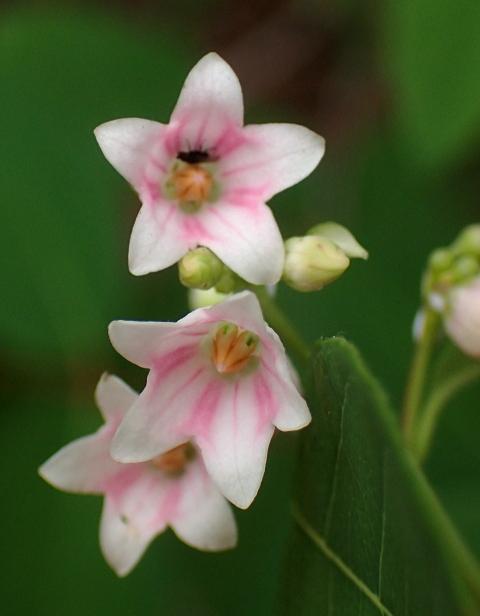
Flowers white, striped pink on the inside. July 17, Long Duck Pond Preserve Lots, Plymouth
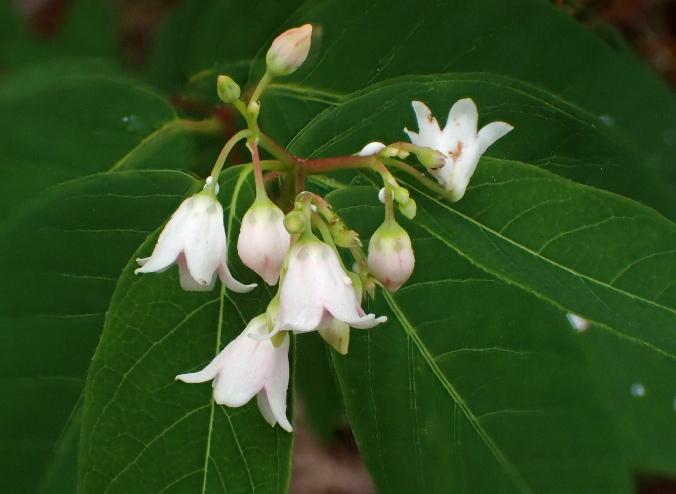
Flowers on the outside. July 17, Long Duck Pond Preserve Lots, Plymouth
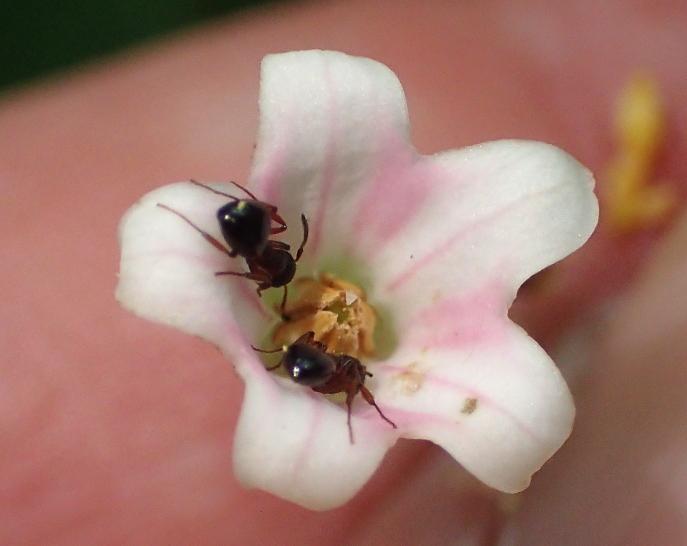
Ants visiting a flower. July 22, Alper Preserve, Plymouth
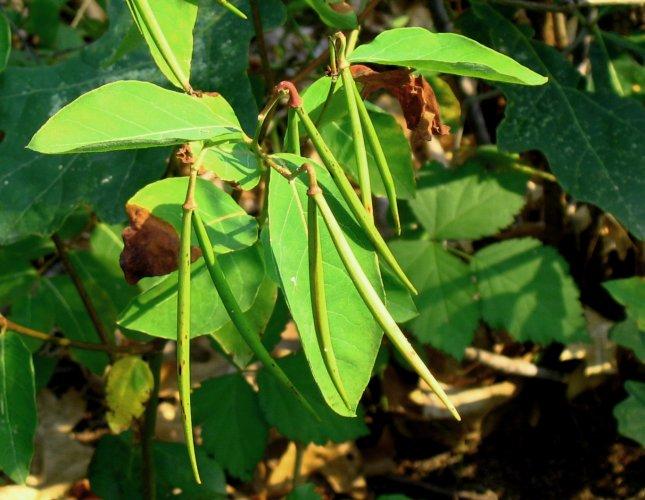
Fruiting. August 5, Stony Brook Reservation, Boston
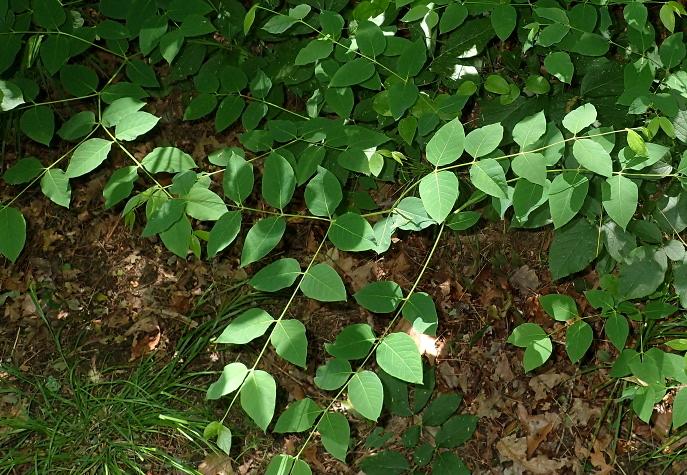
Branching pattern. June 14, Weymouth Great Pond, Weymouth